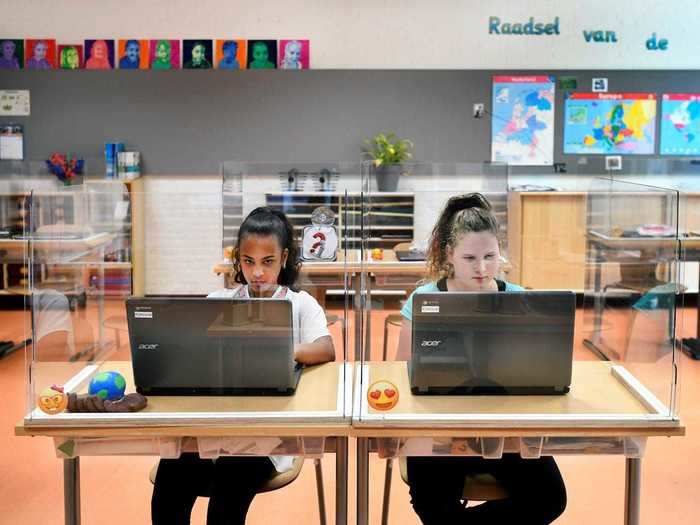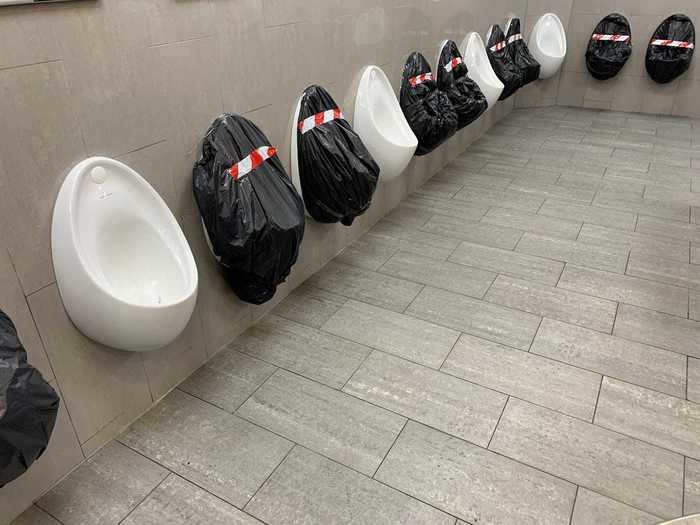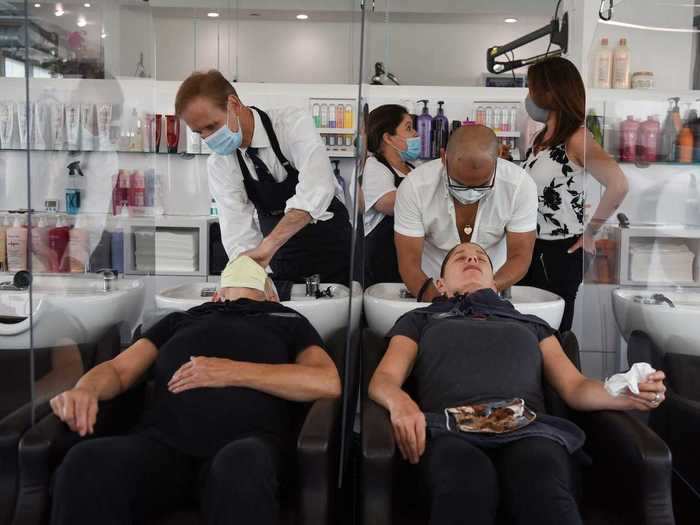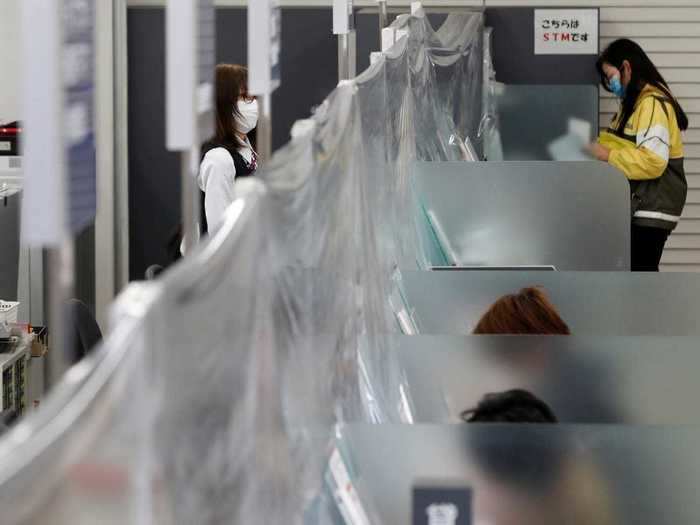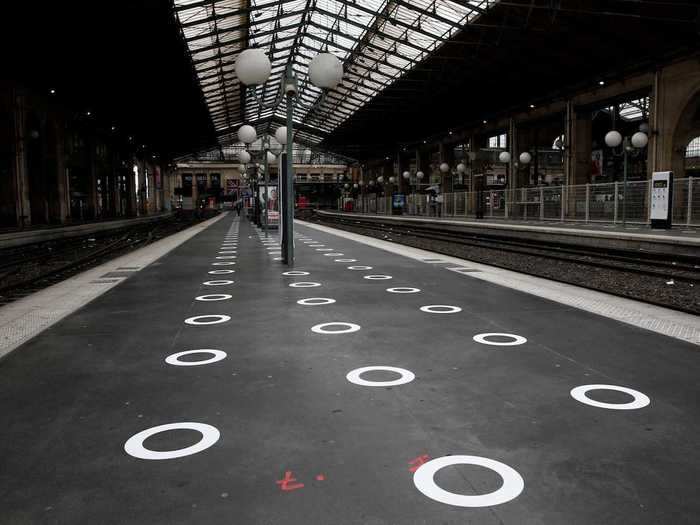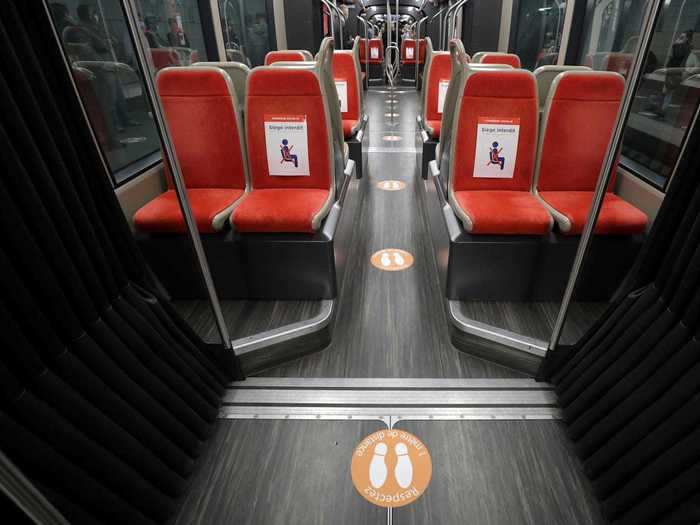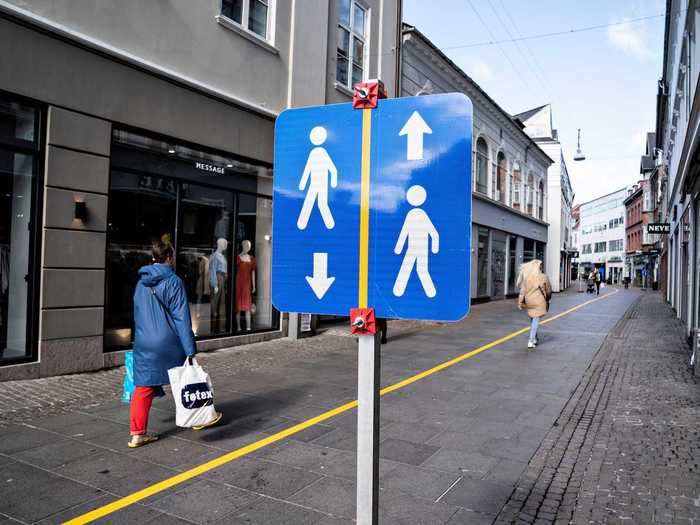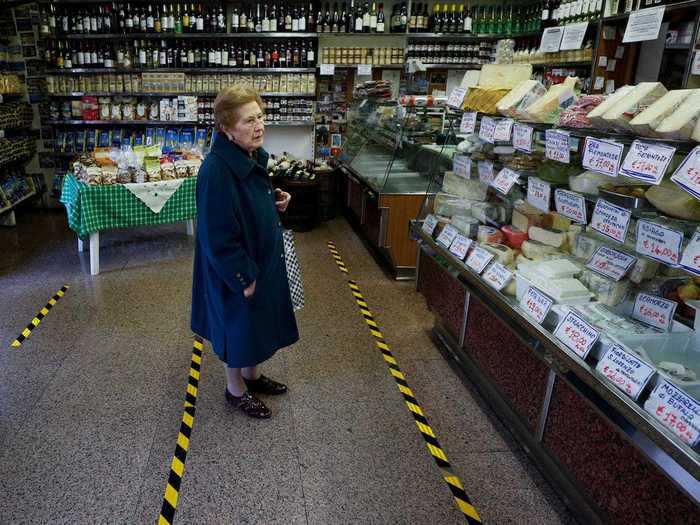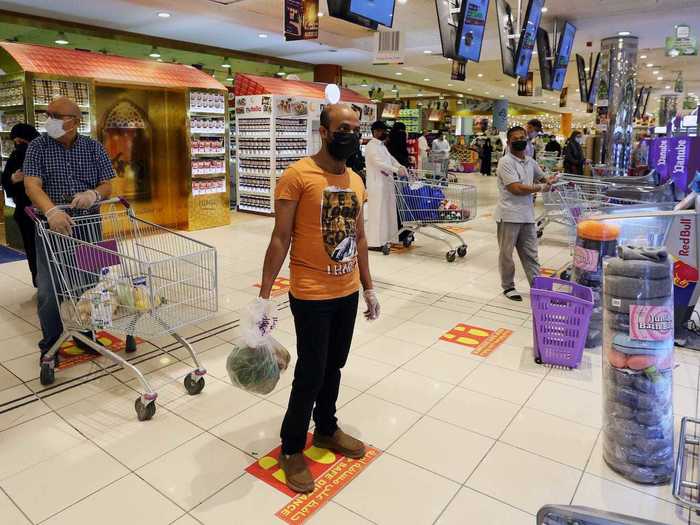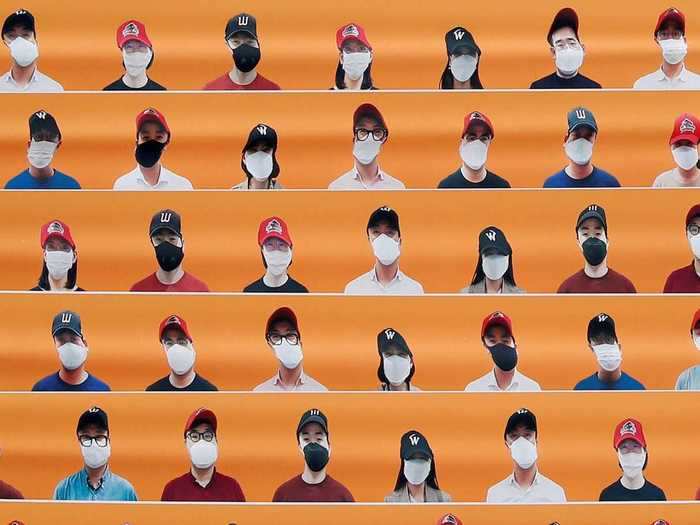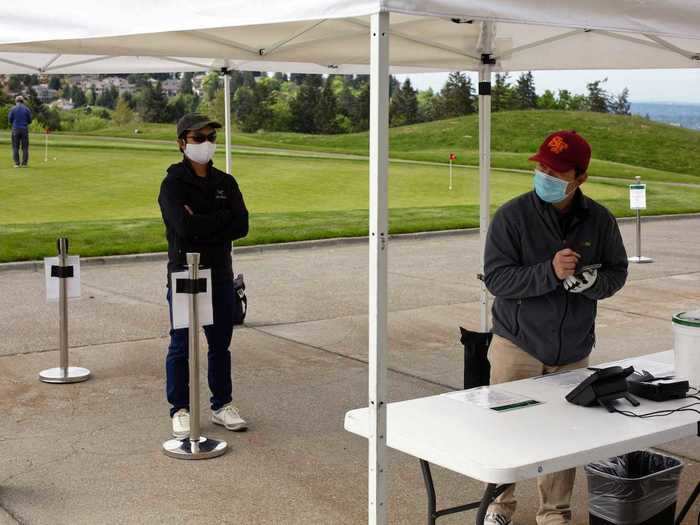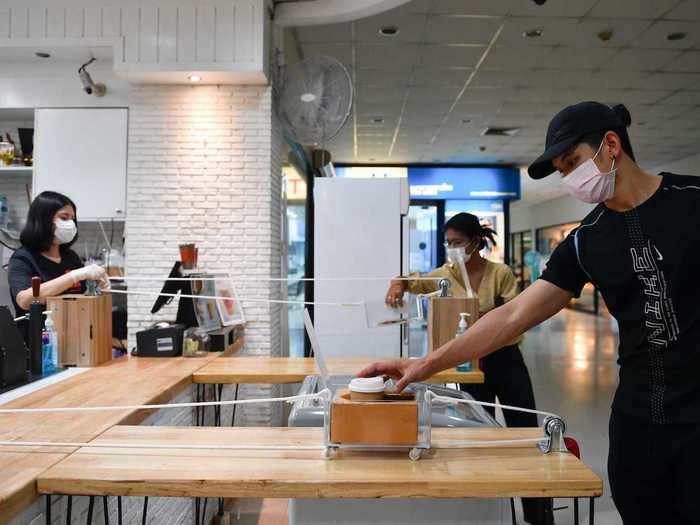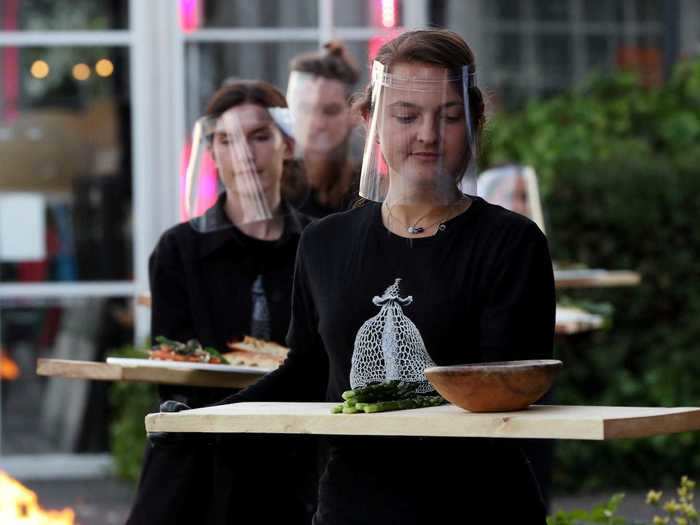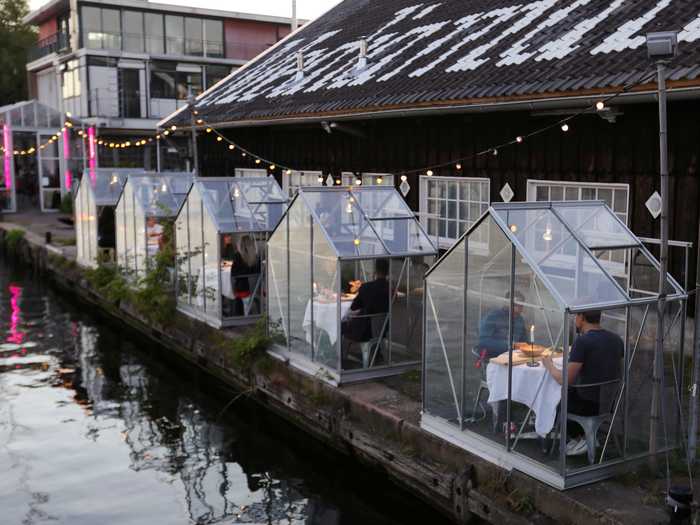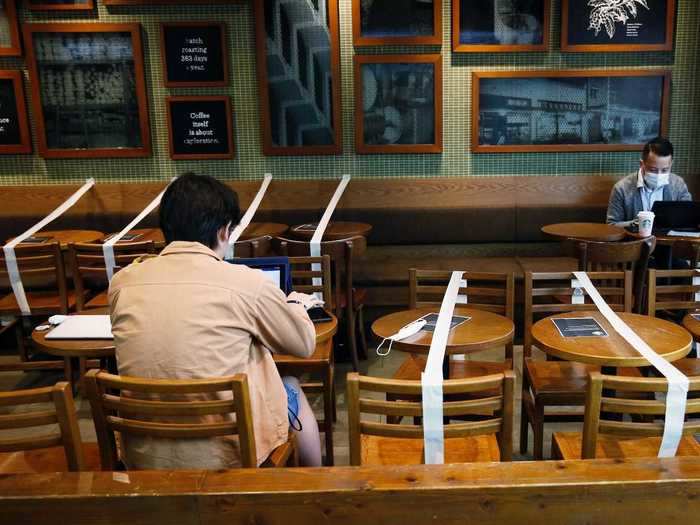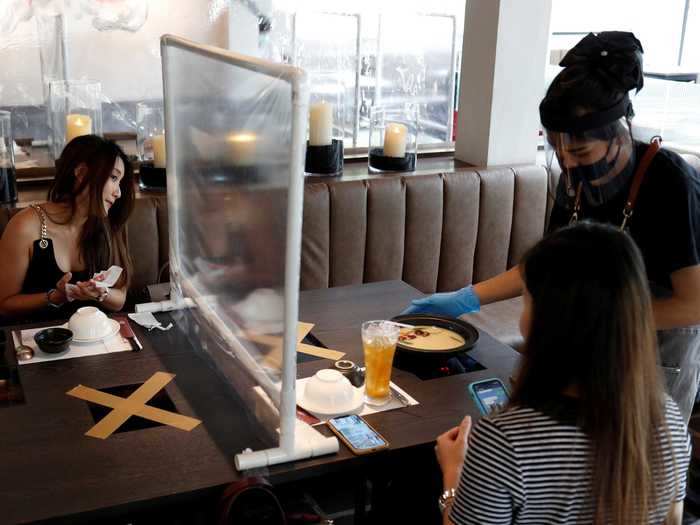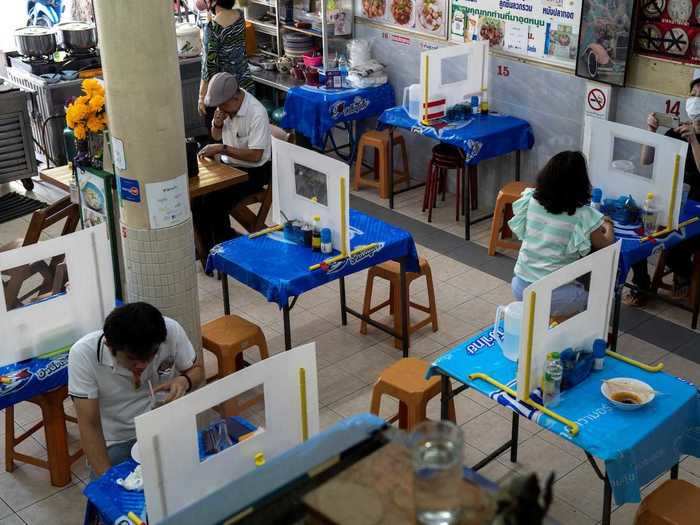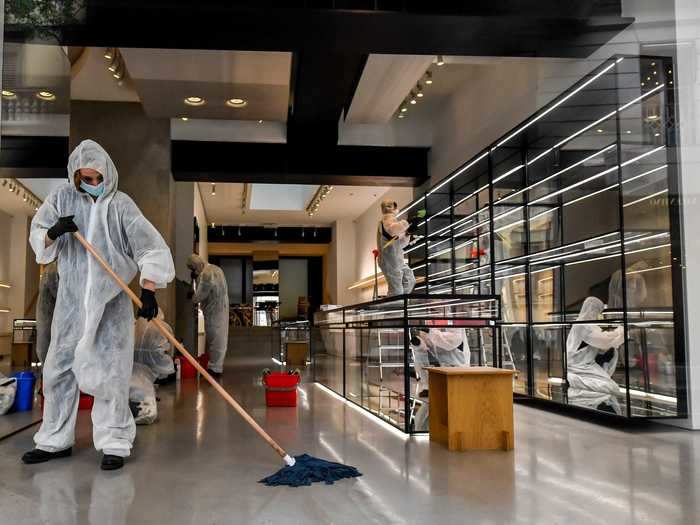People have lunch in a restaurant that reopened in Bangkok, Thailand, on May 4, 2020.Jorge Silva/Reuters
- As some countries have started to lift their lockdown measures, public places have been making changes to adapt to government-issued social distancing measures.
- More public places are using tape, floor markers and plastic dividers to help people comply with social distancing guidelines.
- Photos show how people are trying to adapt to a new way of life during the coronavirus pandemic.
- Visit Business Insider's homepage for more stories.
As some countries begin to lift their coronavirus lockdown measures, public places have been getting creative to adjust to social distancing guidelines.
From waiters wearing personal protective equipment to schools using plastic dividers between children, these photos show the world is adjusting to life under the coronavirus pandemic.
Read the original article on
Business Insider
Children are also being prepped on social distancing in the countries where schools have been allowed to open again.
Pupils sitting behind partition boards made of plexiglass attend a class at a primary school in Den Bosch, Netherlands, May 8, 2020.
Piroschka van de Wouw/Reuters
...and even public toilets, like these urinals seen in the UK.
Urinals to maintain social distancing on the M20 motorway in Maidstone, Britain, on March 26, 2020.
John Sibley/Reuters
...hairdressers...
Women are separated by dividers as they have their hair washed at Bella Rinova in Houston, Texas on May 8, 2020.
Callaghan O'Hare/Reuters
Other places adhering to social distancing guidelines include banks...
A bank teller wearing a protective face mask stands at a counter with a plastic curtain installed at the Higashinakano branch of MUFG Bank in Tokyo, Japan, on April 24, 2020.
Kim Kyung-Hoon/Reuters
The floor markers have been used on train platforms, to ensure people stand 6-feet apart while waiting for their train.
Plastic circles on the ground indicating where to stand at the Gare du Nord train station in Paris, France, on May 5, 2020.
Benoit Tessier/Reuters
Social distancing on public transport is set to become another challenge. But authorities are using methods like taping off to seats to ensure that no close contact is made.
Circles on the ground indicating where to sit and stand in a tramway in Nice, France, on May 6.
Eric Gaillard/Reuters
...and even pedestrian walkways, like this one in Denmark.
A yellow stripe painted in the middle of a pedestrian street in Aalborg, Denmark, May 4, 2020.
Henning Bagger/Ritzau Scanpix/via REUTERS
...to pharmacies, and little shops...
A lady waits to be served behind yellows lines marking the distance customers have to keep apart, in Rome, Italy, on March 10.
Guglielmo Mangiapane/Reuters
One method seen in most countries involves using markers on the floor to help people comply with social distancing guidelines. From supermarkets...
People follow social distancing markings as they line up at a shopping mall in Riyadh, Saudi Arabia, on May 2, 2020.
Ahmed Yosri/Reuters
As some sporting events are set to start again behind closed doors, live audiences are being replaced with banners with pictures of people wearing face masks.
Dummies replace the audience at a regular-season baseball game in Incheon, South Korea, on May 5, 2020.
Kim Hong-Ji/Reuters
On May 5, South Korea's professional baseball league started up again in Seoul's empty Jamsil stadium. Players were required to wear masks as 25,000 seats were left empty, according to the Washington Post
Other sporting events that are set to start again, but behind closed doors, include UFC and the Bundesliga.
But it's not just restaurants that need to adapt. Reopened sports facilities are being extra careful to avoid any social contact including this golf club in Washington, which is asking people to check-in and pay while talking over speakerphone
Golfers with the clubhouse at The Golf Club At Newcastle in Newcastle, Washington on May 5, 2020.
David Ryder/Reuters
Coffee chains and fast-food restaurants are also having to make changes during the pandemic. This cafe in Bangkok is using a contactless pulley system to serve its customers.
A man receives a coffee in Bangkok, Thailand, on March 20, 2020.
Chalinee Thirasupa/Reuters
Restaurant owners and staff members will also have to rethink ways of how to keep service in line with government rules. Some waiters have been seen wearing personal protective equipment (PPE) to serve diners.
Servers in protective gear carry food at a restaurant in Amsterdam on May 5, 2020.
Eva Plevier/Reuters
A restaurant in Amsterdam took social distancing to a whole new level, by seating its diners in small greenhouses that can accommodate up to two people — preferably from the same household.
A restaurant tests servers providing drinks and food to guests in safe 'quarantine greenhouses' in Amsterdam on May 5, 2020.
Eva Plevier/Reuters
In other places, like this local Starbucks shop in Hong Kong, entire tables have been taped-off so that people can sit as far away from each other as possible.
Tables and chairs taped up to maintain social distancing at a Starbucks coffee shop in Hong Kong, on April 2, 2020.
Tyrone Siu/Reuters
But in some places, a plastic divider is not enough. Diners in this Bangkok restaurant, for example, have been asked to sit diagonally from each other to maximize their distance.
People have lunch in a restaurant that reopened in Bangkok, Thailand, on May 4, 2020.
Jorge Silva/Reuters
One of the places that have to adapt the most is restaurants. Some have been coming up with creative ways to enforce social distancing measures, including putting up dividers on tables.
People have lunch in a noodle restaurant that reopened after the easing of restrictions in Bangkok, Thailand, on May 6, 2020.
Athit Perawongmetha/Reuters
As countries begin to slowly lift their lockdown measures, many changes have to be made to public life in an effort to prevent second waves of COVID-19.
Workers wearing protective outfits sanitize a shop in via Monte Napoleone fashion shopping street, in Milan, Italy, Monday, April 27, 2020. Italian factories, construction sites and wholesale supply businesses can resume activity as soon as they put safety measures into place aimed at containing contagion with COVID-19. This concession comes with partial easing of national lockdown restrictions announced Sunday night by Italian Premier Giuseppe Conte. (Claudio Furlan/LaPresse via AP)
Associated Press

